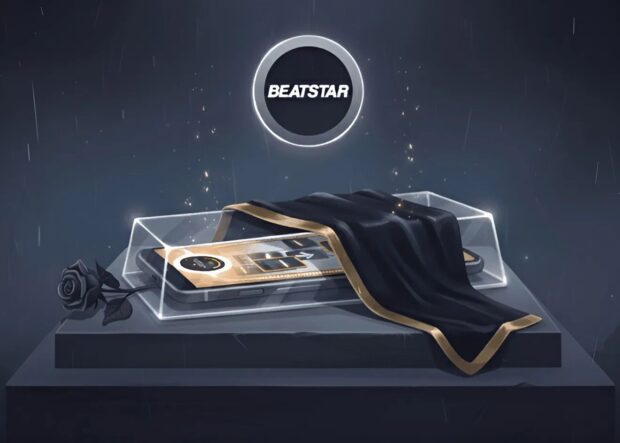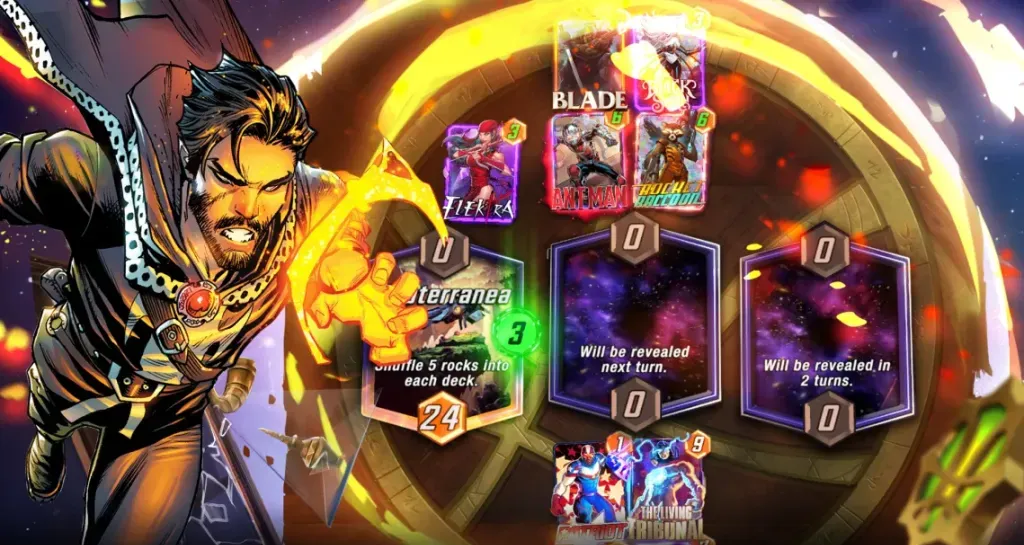
Why Marvel Snap Players Hated Their Most Profitable Event
AnalysisHighlightsJournal 44 Joseph Kim May 27
A tale of two events: 92% revenue boost vs. community backlash (and what we can learn from it)
When Marvel Snap returned from its app store takedown in February 2025, it ran two wildly different events that revealed a fundamental truth about mobile game design: sometimes, the most profitable events aren’t the ones players love most.
Sanctum Showdown drove a 92% revenue spike but left players exhausted. High Voltage “only” generated 52% more revenue but had players begging for its return. The difference? A delicate balance between monetization, engagement, and actually letting players have fun.
Key Takeaways:
- 📊 The Revenue Paradox: Sanctum Showdown’s 2-week grind fest nearly doubled revenue (+92%) but sparked player complaints, while High Voltage’s 1-week sprint “only” increased revenue by 52% but became a fan favorite
- 🎮 Small Tweaks, Big Impact: High Voltage simply changed the game to 3 turns with random energy—proving that minor gameplay modifications can create beloved events players eagerly await
- ⚖️ The Three-Way Balance: Success isn’t just about monetization—it’s mastering the trinity of engagement depth, revenue opportunity, and player satisfaction (miss one, and your community will let you know)

🫰🏻 Snap Judgment: Breaking Down Marvel Snap’s Events
Written by: Ted Park
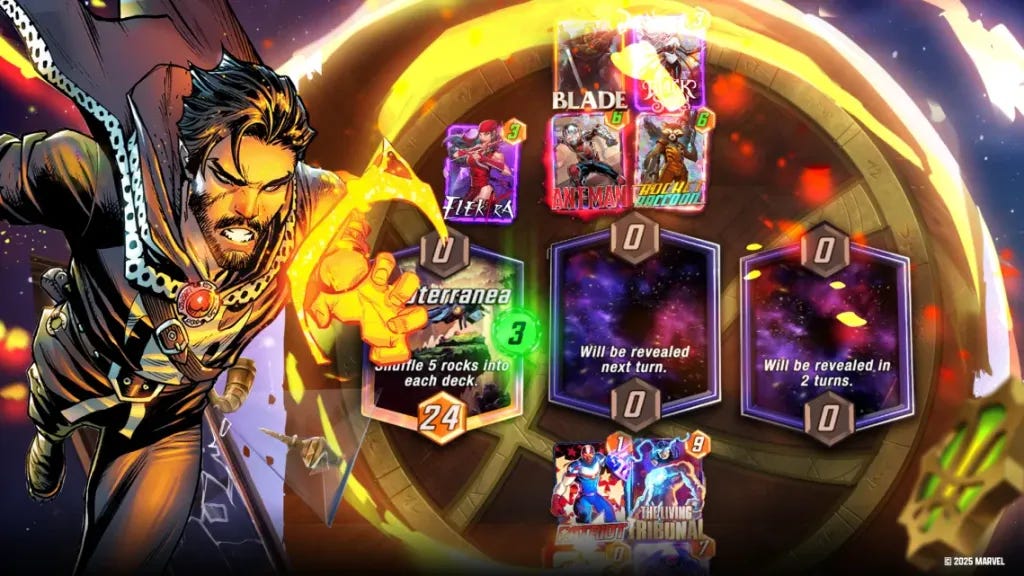
When Marvel Snap returned from its app store takedown in February 2025, it launched two events that were very different from each other.
One event asked players to grind for two weeks, while the other compressed all its excitement into just seven days.
The results reveal how the intricacies of event design can significantly impact how the event is perceived, which every mobile game developer needs to understand.
With 22 million downloads and $200M in revenue, Marvel Snap has earned the right to experiment. But these weren’t just experiments—they were opposing philosophies about player engagement, each with profound implications for monetization and retention.
The two events we’ll go over are Sanctum Showdown and High Voltage.

Key Insights
- Long- and short-form limited-time events (LTEs) can require different approaches to gameplay, progression, and monetization.
- Don’t be afraid to experiment with small gameplay tweaks—they can lead to an LTE becoming beloved, with players eagerly awaiting its return.
- It’s important to find a balance between engagement and monetization.
Revenue Analysis
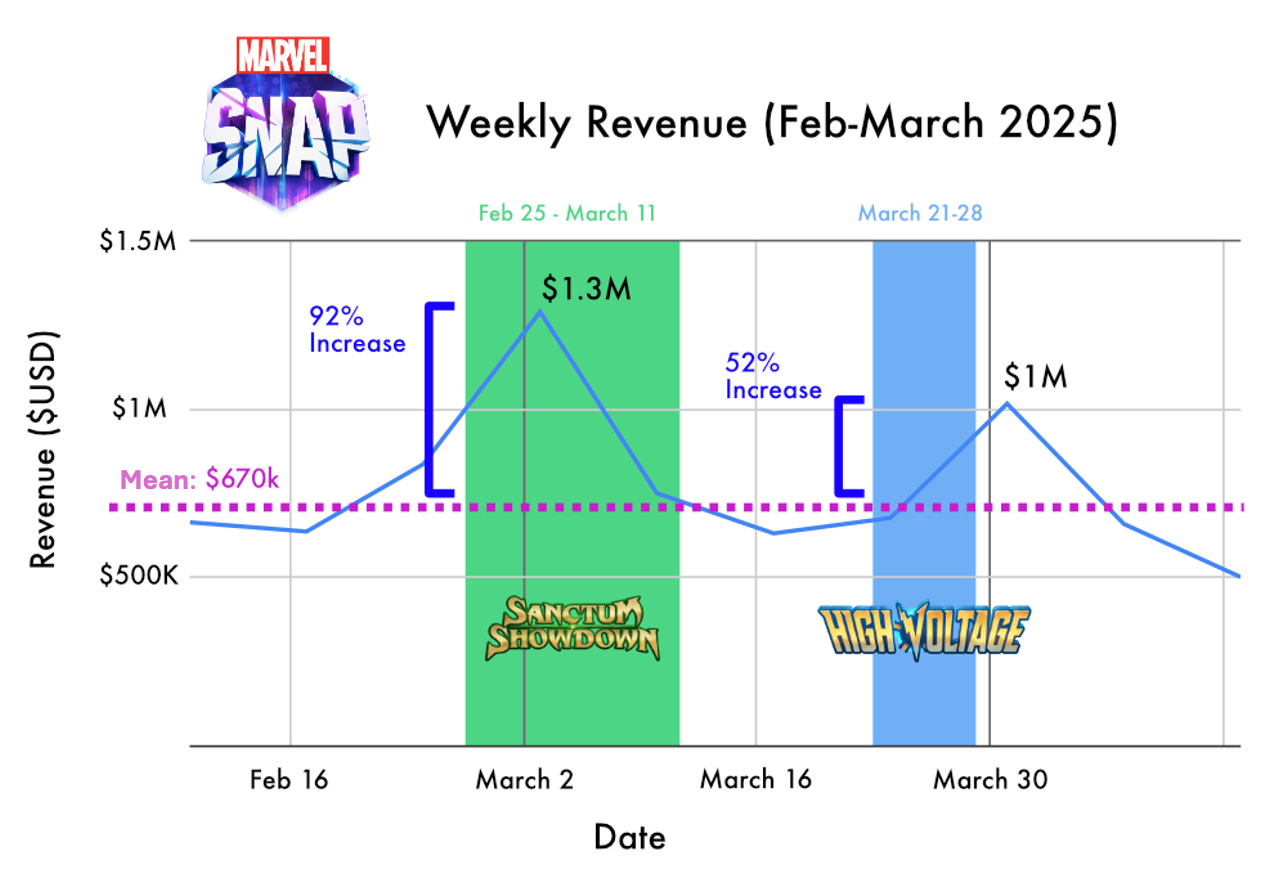
- Sanctum Showdown’s peak revenue ($1.3M) increased 92% from the mean ($670k)
- High Voltage’s peak revenue ($1M) increased by 52% from the mean
- Event timing drove spending patterns:
- Shop-based event (Sanctum) → Players spent earlier to acquire their most desired items
- Battle pass event (High Voltage) → Last-minute spending to complete content
Sanctum Showdown: The Points Race
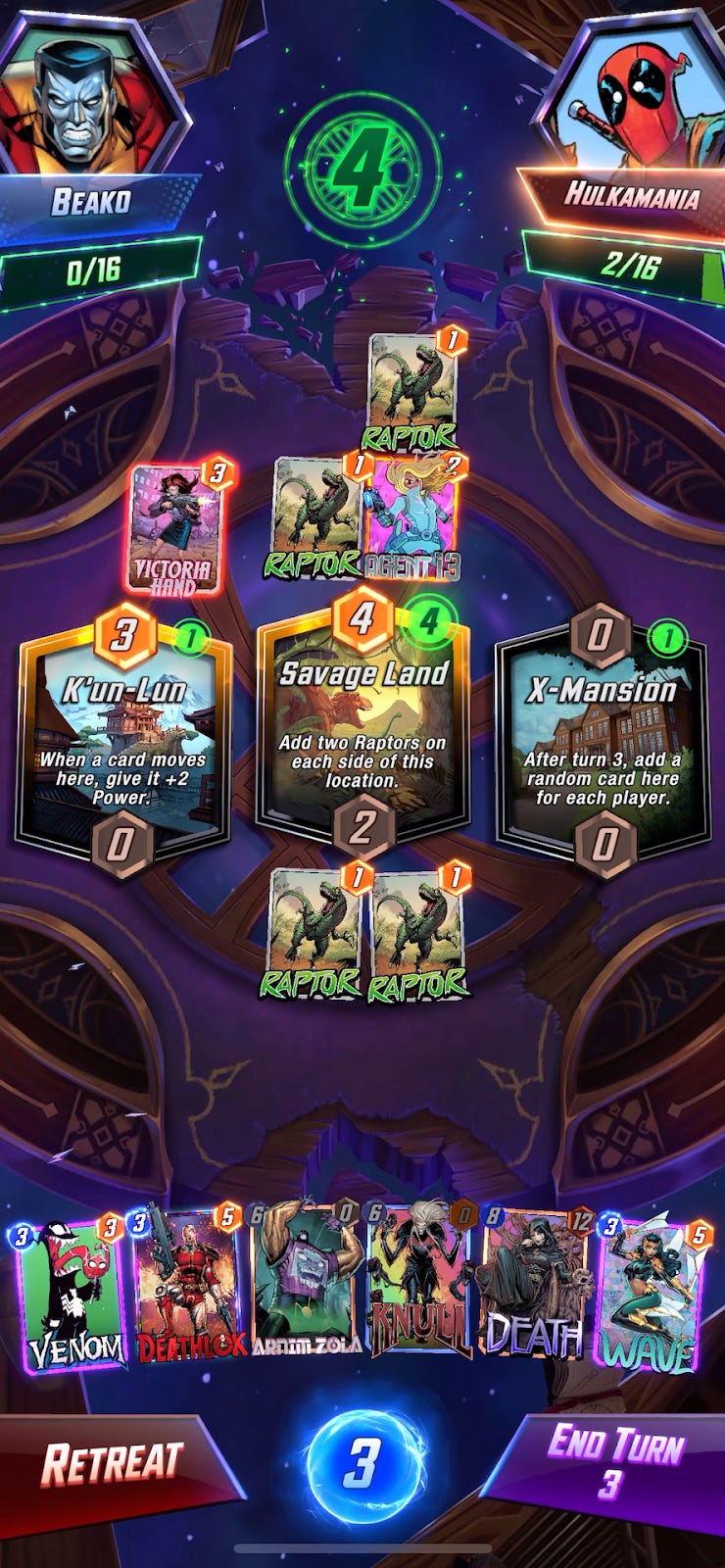
Sanctum Showdown was a new event introduced on February 25, 2025, and lasted for two weeks.
In the regular game, you focus on capturing at least 2 of the 3 locations on the board by having the most Power there. In Sanctum, each location is assigned a point value that changes every turn.

Points are the green circles, while Power is the numbers in the center of the locations
You still capture locations, but now the focus is on capturing the locations to collect the most points. First to 16 points wins.
The turn limit was removed so the games could be longer than usual (regular games are 6 turns).
The designers most likely thought that with the ruleset change, it would take players longer to learn the game and form effective strategies. Thus, a longer event time was necessary, which brings the question: how do you keep engagement for longer?
Entry Tickets
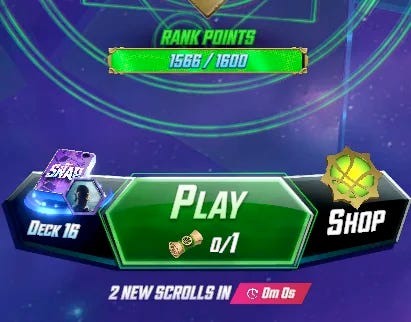
To play a game, players must spend a Scroll. You start with 12 Scrolls. Players can acquire more Scrolls by waiting 8 hours to get 2 more or paying 40 Gold (premium currency).
Winning a game refunds your Scroll, so you are rewarded for playing well.
Here’s the Principal Game Designer, Glenn Jones, explaining why they added Scrolls:
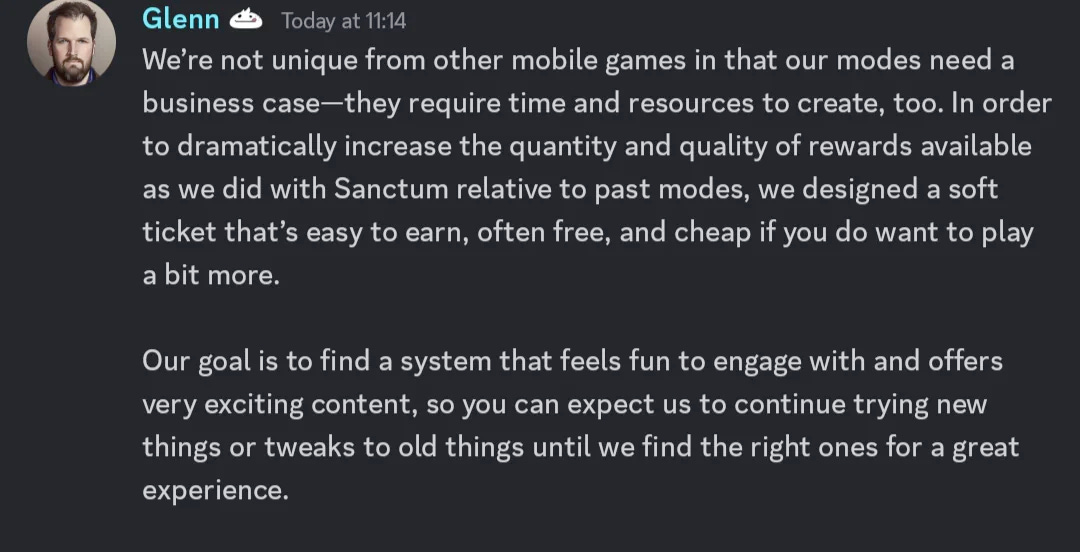
Event Shop
At the end of the game, all of the collected points convert into the event currency, Charms. Players can use these Charms to spend on the Event Shop, which sells cosmetics, card upgrade currency (Credits), new cards, and new event-exclusive cards via a “Portal Pull.”
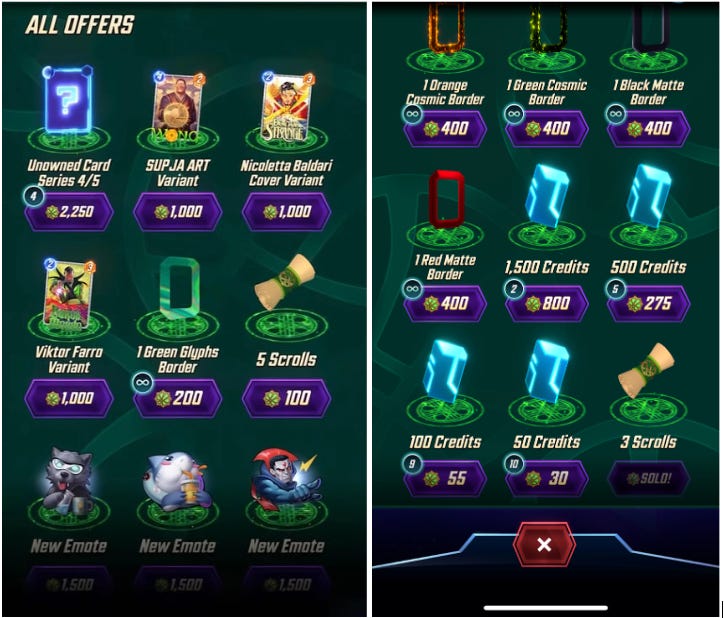

You can buy Charms at a rate of 1 Charm: 1.35 Gold, but it’s not offered directly. It’s only offered when you try to buy something, and you don’t have enough Charms.
The shop encourages players to continue playing to earn enough Charms to purchase all the items they want while also offering a choice of rewards (I opted for all the Portal Pulls).
Ranking
The total amount of Charms earned from games is also used to fill up your Rank meter. Getting to the next Rank will reward you with Scrolls and Charms.

High Voltage: High-Paced Action

High Voltage was a one-week returning event. At the time I played it (March 21-28, 2025), it was the second time that the event had run; it returned for a third time in April 2025.
The event limits games to three turns. Cards are drawn 2 at a time, and a random amount of energy between 2-5 is added each turn, meaning two powerful 6-Energy Cost cards can be played on the last turn instead of the usual one in a regular game.
The exciting gameplay necessitates a shorter event, as it may become repetitive after too long and divert too much attention away from the main game.
Battle Pass
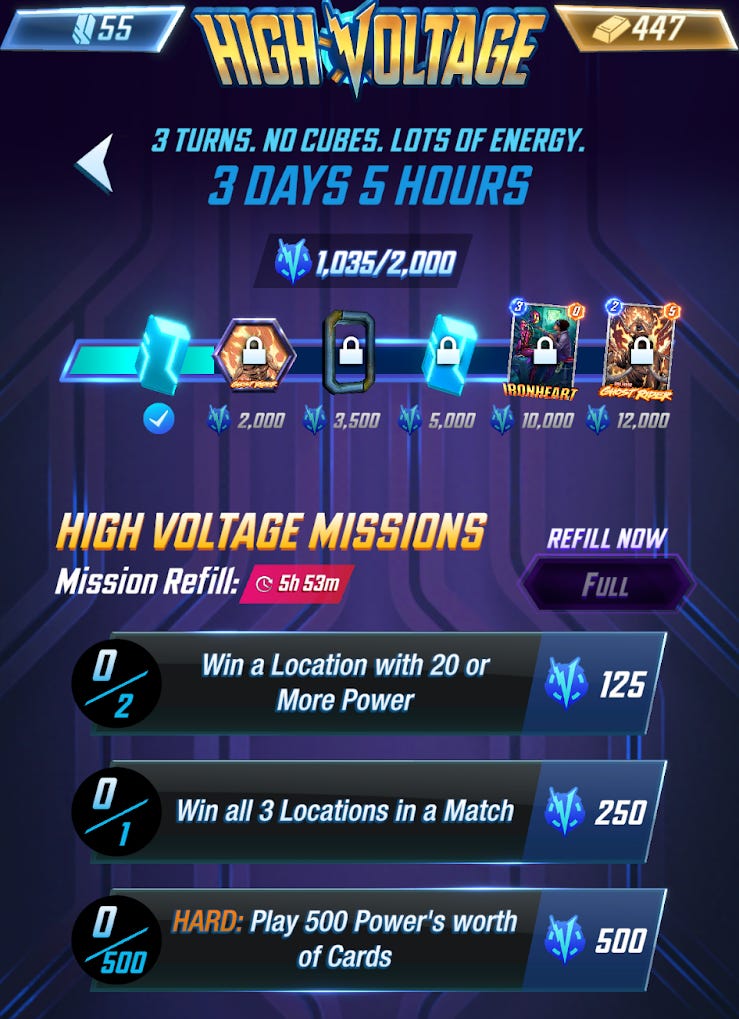
When you win, you get 20 Volts; these Volts fill up a Battle Pass-style linear reward track.
Players are given 3 Missions every 8 hours that can give 125, 250, and 500 Volts. Missions can be refilled for 100 Gold each.
This was the only form of progression, which makes sense as a shorter event, as you wouldn’t have enough time to try and complete other forms of progression along with it.
Event Table Comparison
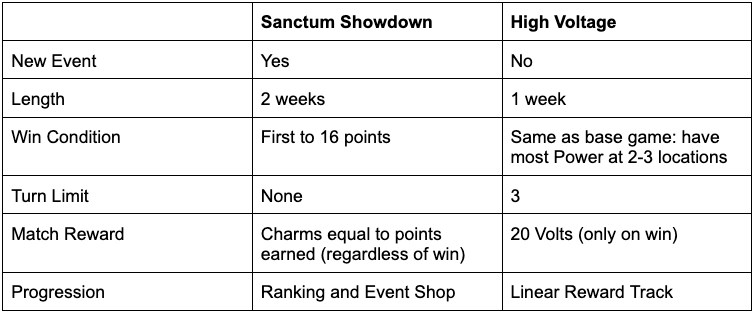
Gameplay Analysis
Sanctum Showdown’s gameplay meant that decks had to be based on being flexible to get the most points possible.
Some players discovered spammable strategies, such as the Guardians of the Galaxy cards, which add more Power by being played in the same location as the other player. Since you know that the other player will likely play their cards in the location that gives the most points, you can exploit that.
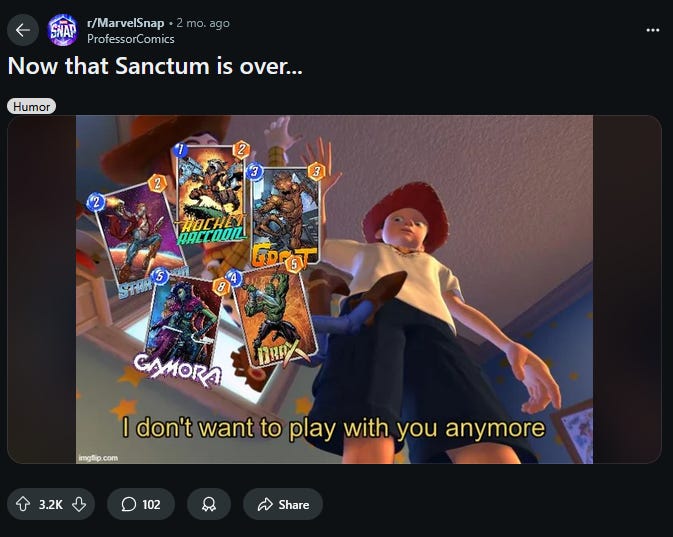
The developers had to address this when players complained about it:
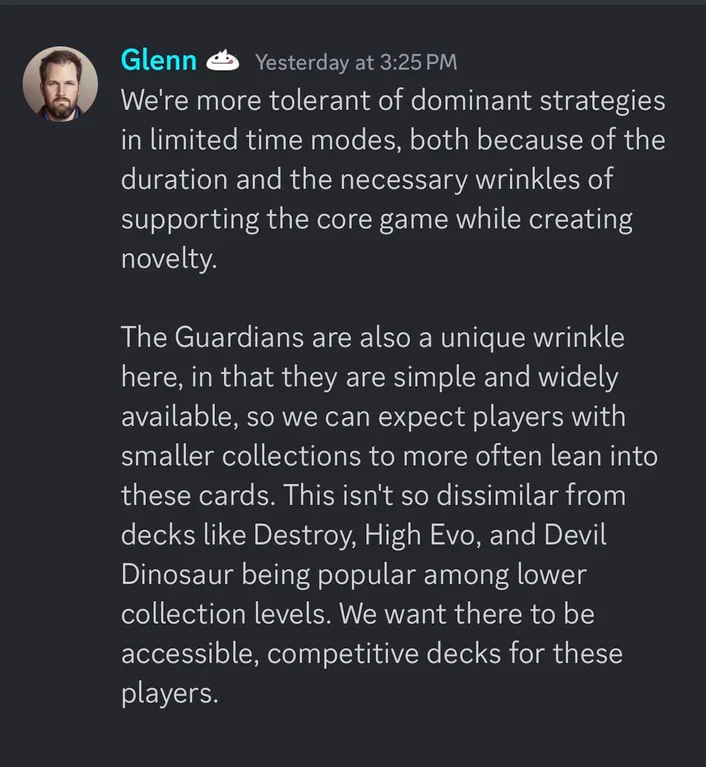
High Voltage’s gameplay is quick, so players are encouraged to create decks that can combo easily (and counter those combos). The event rewards players who possess a deeper understanding of the game, so it’s no surprise that the game mode is popular among the more established player base (more on that later).
In both events, there were banned lists of cards that made the game modes unfun to play (cards that adjusted the turn limit, for instance).
One interesting thing is that both modes discourage the players from retreating. In Sanctum’s case, you keep the Charms that you earn if you keep playing, and in High Voltage, there’s no penalty for losing other than missing the Volts you get if you win.
Both events demonstrate how introducing small changes to gameplay with LTEs can have a significant, lasting impact on a game’s health, enabling players to become more engaged and develop new strategies. By iterating on the event (by bringing it back in the case of High Voltage), you can form a dialogue with your player base, figuring out how to improve on the event and get them excited for its return.
Progression Analysis
As a player, I found Sanctum’s progression to feel a bit too grindy. Having an entry ticket to gate the matches meant added pressure to win, in addition to trying to earn the most points. You also can’t get that many Charms per match.
High Voltage’s Reward Track was more straightforward, and having Missions worth a lot of Volts made you feel like you were accomplishing ranks a lot faster.
I would argue that High Voltage needed the entry ticket versus Sanctum to help alleviate Sanctum’s grind and encourage players to create more thoughtful decks for High Voltage. This also prevents players from rushing through the Battle Pass.
On the other hand, Sanctum had a lot of content to get through, so it would have felt okay to lower the barrier to entry.
To also help with the grind in Sanctum, I would consider giving bonus Charms for winning a game.
Monetization Analysis
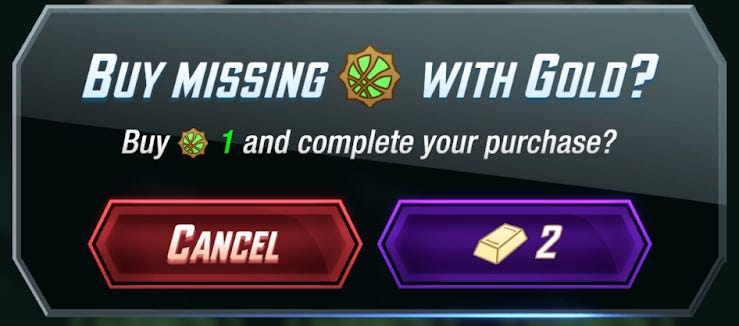

Both events placed significantly less emphasis on direct monetization and preferred to use indirect methods of replenishing resources.
Sanctum Showdown allowed you to purchase:
- Event currency (Charms)
- Entry ticket (Scrolls)
High Voltage allowed you to purchase:
- Mission refreshes
In Sanctum’s case, having a shop made it more likely that players would not have enough Charms to buy everything, so they are more likely to want to spend Gold to make up the difference.
However, it seems strange that Charms could not be bought directly. While the idea may have been to encourage players to participate in the event, less direct monetization means lower revenue.
And it didn’t help that the event felt grindy, so the lack of methods to speed up progression was more apparent.
High Voltage, on the other hand, did not have a Shop, and instead, you would refill Missions to get Volts to fill up the Battle Pass. So, once you fill-up the Battle Pass, you have no incentive to keep playing.
Offering Event Currency boosts and repurposing content as purchasable Battle Passes are potential remedies. As mentioned earlier, providing an entry ticket to High Voltage would have helped players avoid rushing through the content.
Community Feedback
For Sanctum, player thoughts were mixed:
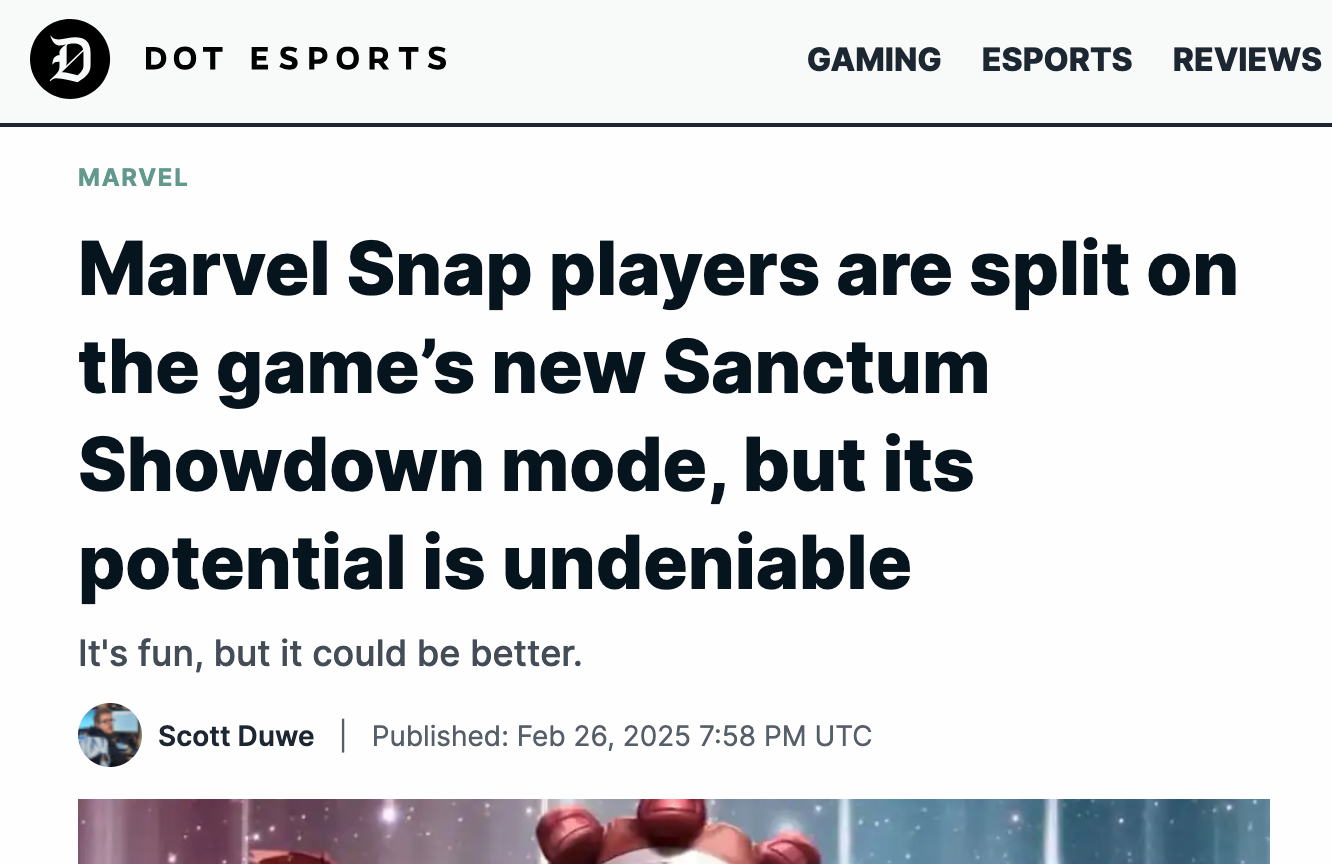
Players complained about the grind and the Scrolls system, as waiting for the free Scroll refresh requires you to wait 8 hours.
Meanwhile, High Voltage has become a fan favorite:

What’s striking is this was contrary to the developers’ expectations; when discussing their first event (Deadpool’s Diner) vs High Voltage, the thought was that High Voltage (HV) didn’t reward winning enough:
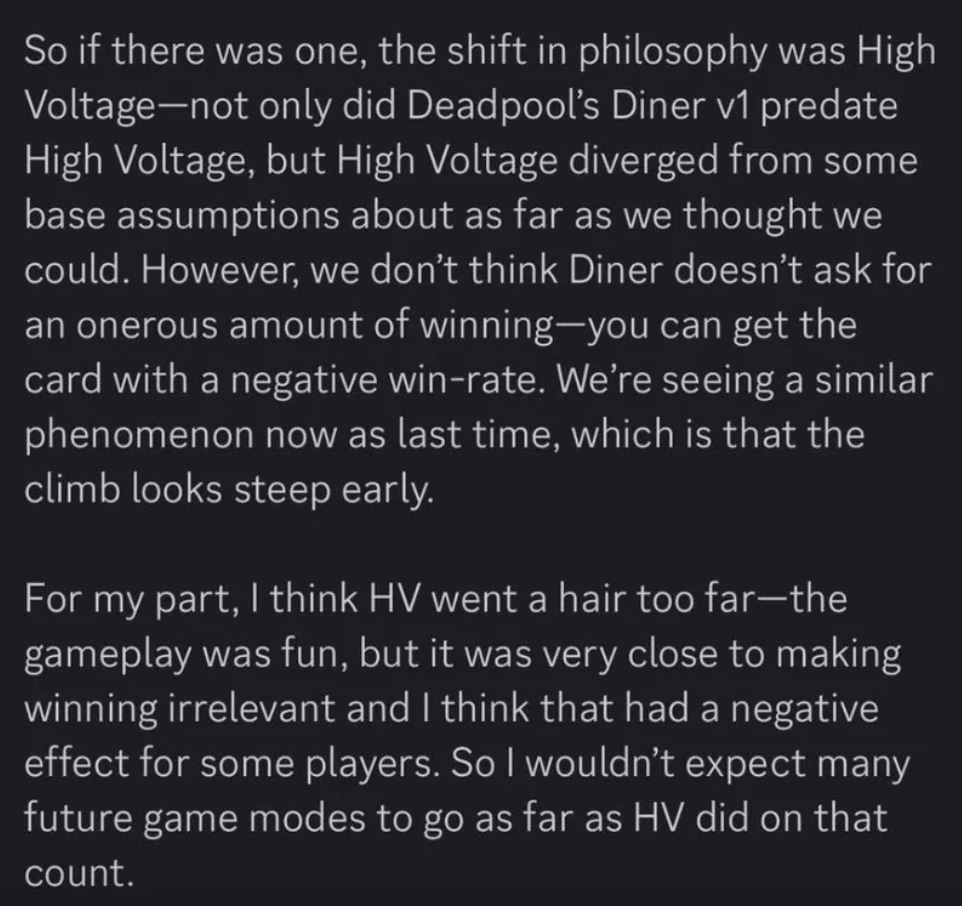
One Redditor mentions, however, that they disliked the Bubs system in Deadpool’s Diner/DPD, which is a similar system to Scrolls in Sanctum:

While players like an in-depth rewards system, they don’t like the feeling of being prevented from playing the game. Designers should remember to keep this in mind when developing their systems.
Conclusion
For game designers and PMs, the takeaways from Marvel Snap’s Sanctum Showdown and High Voltage are rich:
- Use LTEs as opportunities to switch up the gameplay: Different win conditions and strategies will lead to more active participation from your player base.
- Event design requires all systems to work together in harmony: Make sure your players feel rewarded properly for progressing through an event and not punished too harshly.
- Balancing engagement and monetization is important: Events are a great way to monetize. Don’t forget to give your players ways to reward you for your hard work.
The revenue data shows that both events succeeded financially—Sanctum Showdown with a 92% spike and High Voltage with a 52% increase. But dig into the community feedback, and a stark contrast emerges: Sanctum Showdown left players complaining about the grind and repetitive strategies, while High Voltage had them calling it “the most fun I’ve ever had playing this game.”
The lesson? Revenue spikes don’t always equal success. Sanctum Showdown proved you can optimize for monetization and engagement depth while missing the mark on player satisfaction—and your community will let you know. High Voltage showed that when you nail the three-way balancing act between depth, monetization, and fun, players don’t just spend—they evangelize. In the end, the most sustainable events aren’t the ones that squeeze out every dollar but the ones that leave players counting down to their return.







